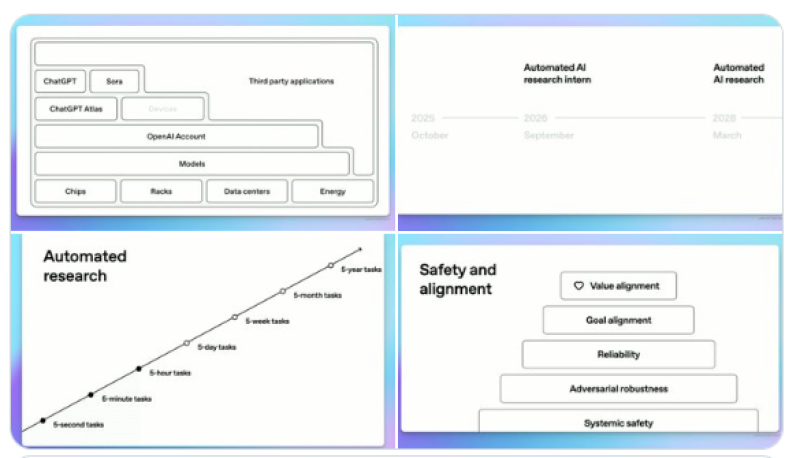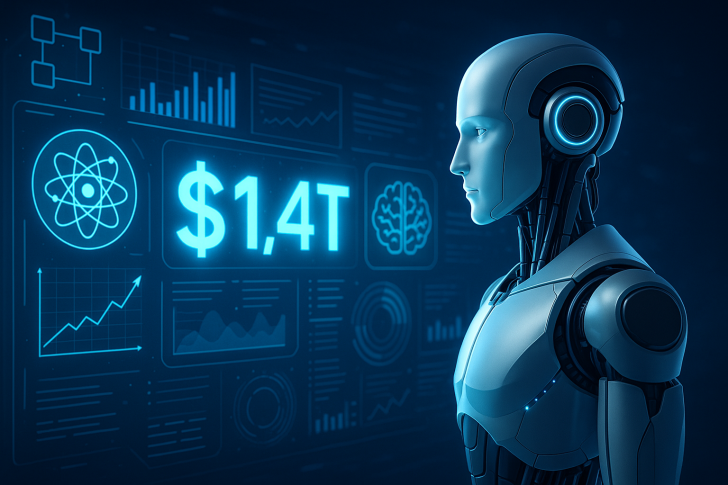● OpenAI's leadership — Sam Altman, Jakub Pachocki, and Wojciech Zaremba — shared their ambitious vision for the next few years. The plan goes way beyond better chatbots: they're aiming for AI that can conduct scientific research independently, backed by over $1.4 trillion in infrastructure spending.

● OpenAI says its core mission, across both the Foundation and the for-profit arm, is making sure AGI benefits everyone. Rather than creating some all-knowing oracle locked away in a lab, they're building practical tools people can actually use — ChatGPT, Sora, the upcoming ChatGPT Atlas, and future hardware. Everything connects through one OpenAI Account, running on stacked layers of models, data centers, custom chips, and massive energy systems.
● The research timeline is striking. According to Tibor Blaho's summary, OpenAI expects to have an "AI research intern" by September 2026 — capable of making some discoveries on its own. By March 2028, they want a fully automated researcher producing verifiable scientific results. Their current models already compete with top humans in math and coding competitions. Pachocki mentioned they'll need to scale "in-context compute" massively, dedicating entire data centers to the hardest problems.
● On infrastructure, Altman announced over 30 GW of committed compute capacity. The Stargate program aims to build 1 GW data center factories every single week, with partners like Microsoft, Nvidia, AMD, and SoftBank. Each gigawatt facility costs roughly $20 billion. As Chubby♨️ pointed out, "The $7 trillion goal no longer seems far-fetched."
● Safety isn't being ignored. OpenAI outlined five protection layers and is collaborating with Google and Anthropic on alignment research. The nonprofit Foundation, owning 26% of the company, oversees mission compliance and funds global AI initiatives.
 Peter Smith
Peter Smith

 Peter Smith
Peter Smith


